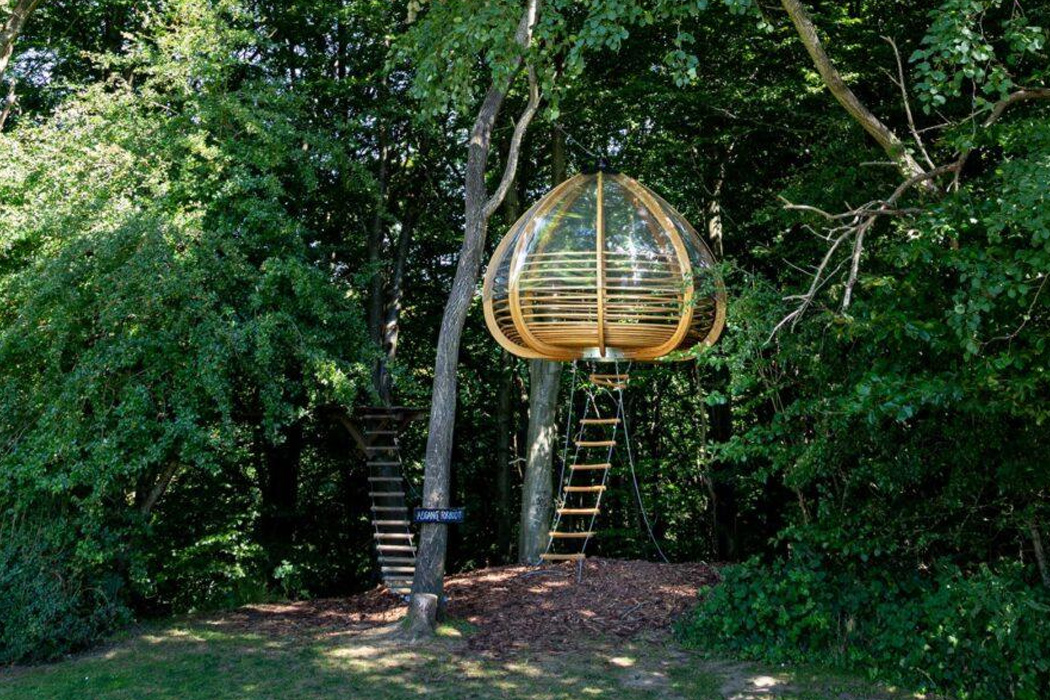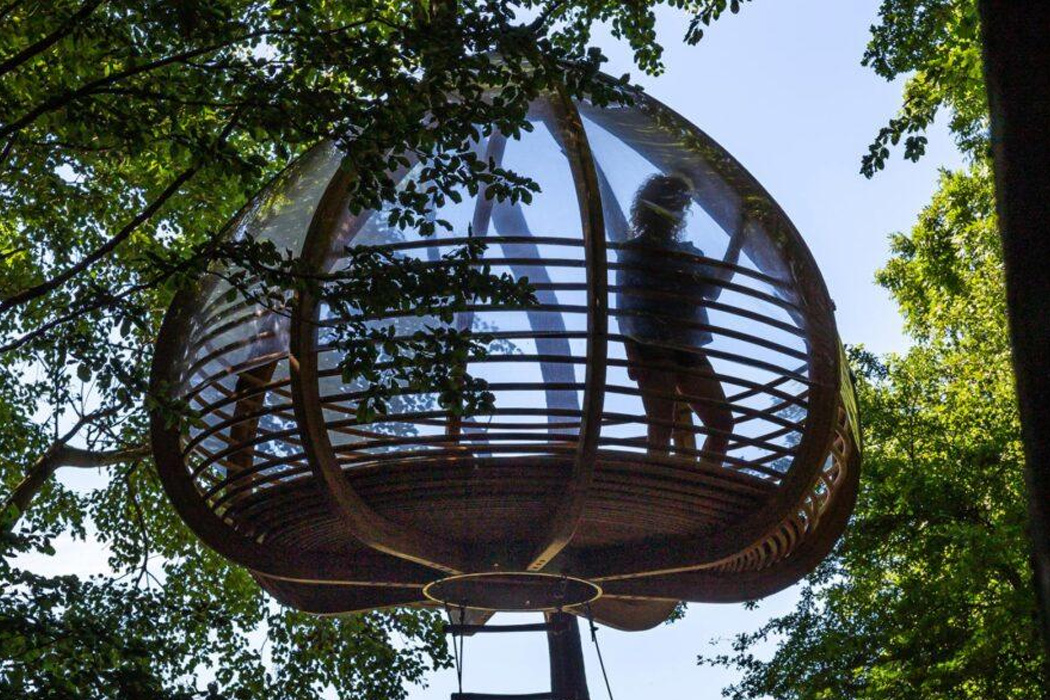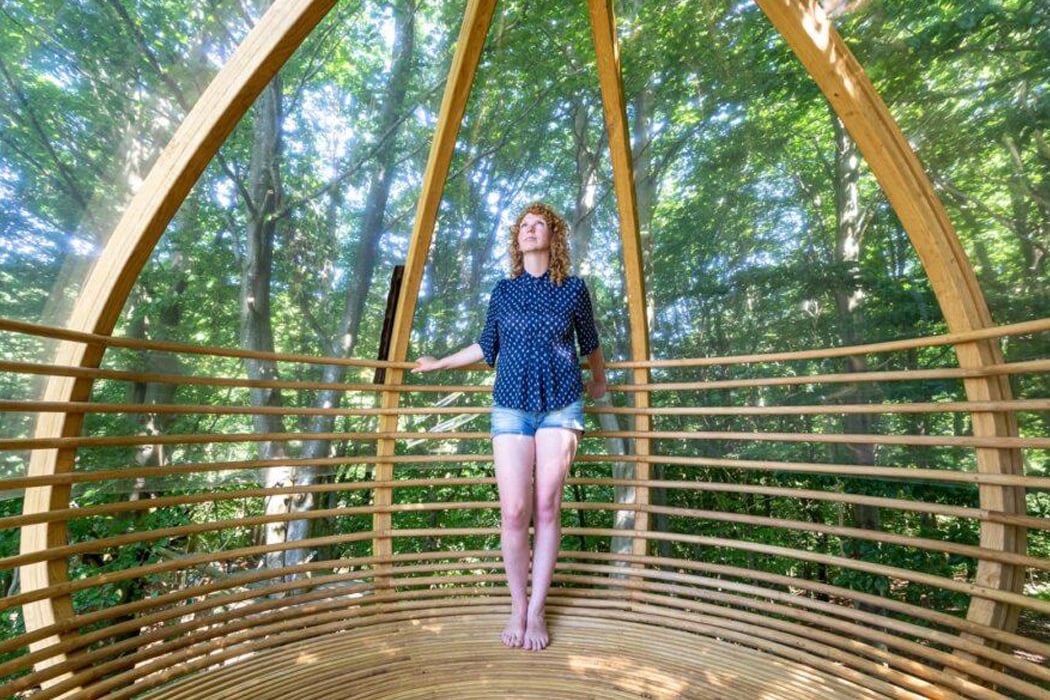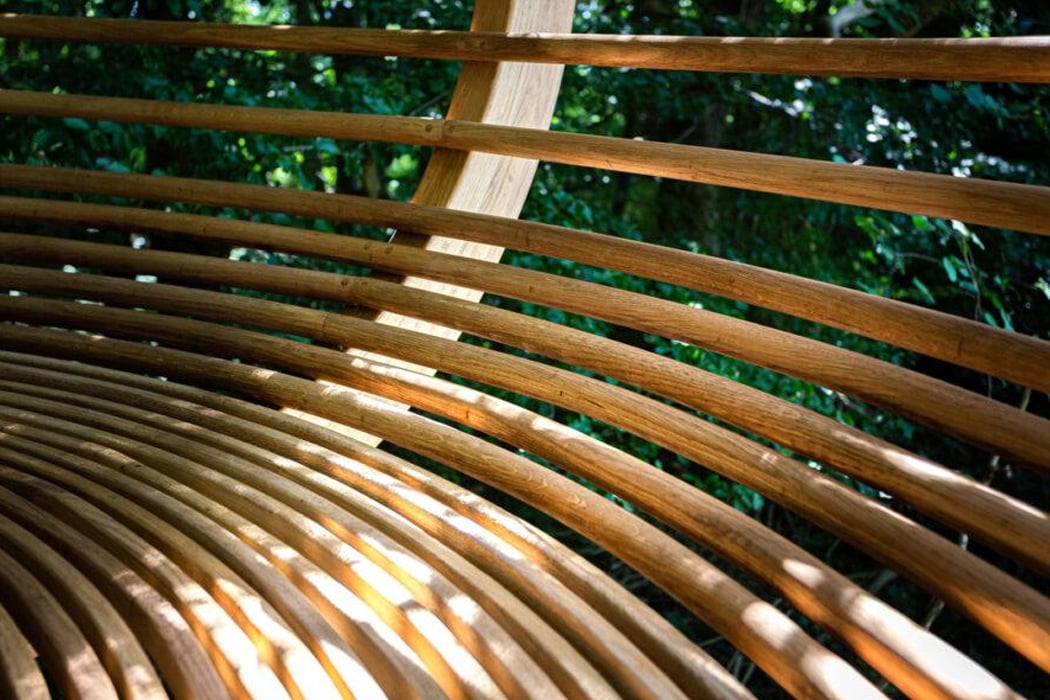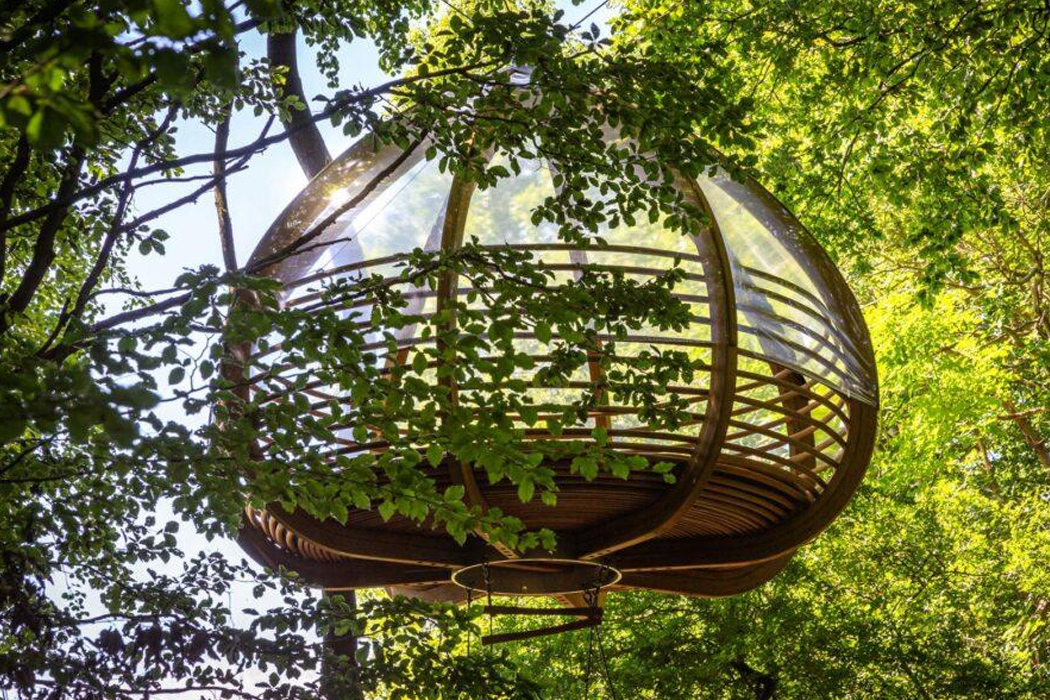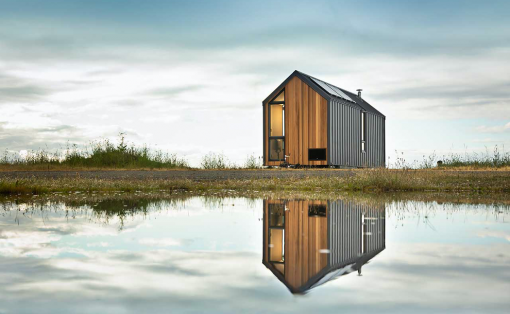
This will sound lame but the Hanging Shelter (Hængende Ly in Danish) is actually the literal meaning of hanging out – you see it? It is a lot more than hammock strung up on trees, in fact, it is a very unique accommodation that has been custom designed using traditional shipbuilding techniques.
The enclosed treehouse is nestled 2.5 meters above the ground that offers 360-degree views of the lush green Genner area in Denmark. The only way to get in and out of the Hanging Shelter is via a basic ladder. The structure is constructed with steam-bent oak which forms the curved walls and floor – something that sets it apart from similar tents and is hard to miss! To give it a height there are eight additional arched wood frames that continue to shape the rounded walls vertically. The design team has used a thin, clear membrane to wrap the entire shelter in so that you are protected from different weather conditions and are still able to soak in all the natural greenery Genner has to offer.
Stedse Architects are known for architectural projects that revolve around “sustainable construction, including climate adaptation, energy-efficient buildings, energy calculations and environmental consulting” – making them worthy of admiration on the design front as well as being a community-conscious company. The Hanging Shelter is crafted by a team of skilled boat builders and engineers who worked with the architects. Both the teams – Stedse and the local builders – have a love for nature and using wood as an element. This made their collaboration successful in highlighting nature, design, and the intricate art of woodworking with a single overnight accommodation that had minimal site impact.
Wood gets a lot of flak when it comes to being used as a sustainable material because people often say “you are killing trees” but that is not how sustainable materials are picked. It is a natural, renewable, and eco-friendly material for building, with a lighter carbon footprint than steel or concrete. Maximizing the usage of wood in residential and commercial construction can remove an estimated 21 million tons of C02 from the atmosphere annually which is equal to taking 4.4 million cars off the road. Companies using wood in construction also follow a cycle to make sure they are not depleting resources faster than they can be renewed – hence many partake in planting trees all the time. Also, residues of wood industries are utilized in either by-product manufacture or fuel and clean bio-energy making it a very clever choice for sustainable construction. The company hopes that the Hanging Shelter can be an example of a project that will “show the potential of using wood as a natural, sustainable, and adaptable building material.”
Designer: Stedse Architects
